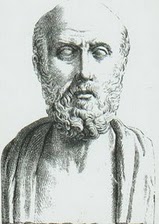 People with arthritis who exercise have less pain, more energy, improved sleep, and better day-to-day function, according to the American College of Rheumatology.
People with arthritis who exercise have less pain, more energy, improved sleep, and better day-to-day function, according to the American College of Rheumatology.One form of arthritis, osteoarthritis, is the most common form of joint disease in humans and is a leading cause of disability among the elderly. Osteoarthritis is a slowly progressive joint disease typically seen in middle-age to elderly people. It occurs when the joint cartilage breaks down, causing the underlying bone to fail. OA symptoms include joint pain, stiffness, knobby swelling, cracking noises with joint movements and decreased function. It typically affects the joints of the hands and spine and weight-bearing joints such as the hips and knees.
People who are physically active are healthier, happier and live longer than those who are inactive and unfit, and this is especially true for people with arthritis. Yet, arthritis is one of the most common reasons people give for limiting physical activity and recreational pursuits.
"People with arthritis avoid exercise for a number of reasons," explains Donna Everix, MPA, BS, physical therapist and Association of Rheumatology Health Professionals member. "Some avoid it due to fear of pain or injury, and others avoid if for the same reason many people without arthritis do not wanting to make a lifestyle change."
Inactivity, in addition to arthritis-related problems, can result in a variety of health risks, including Type II diabetes and cardiovascular disease. In addition, decreased pain tolerance, weak muscles, stiff joints and poor balance common to many forms of arthritis can be made worse by inactivity.
September is Healthy Aging Month, and the American College of Rheumatology encourages people with arthritis to increase physical activity by trying one or more of the major types of exercise. Each can have a positive effect on reducing pain related to arthritis and other rheumatic diseases:
1. Flexibility: Flexibility exercises help to maintain or improve the flexibility in affected joints and surrounding muscles. Benefits include better posture, reduced risk of injuries and improved function. When focusing on flexibility exercises, range of motion exercises should be performed five to 10 times on a daily basis while stretching exercises can be performed at least three days a week with each stretch being held for 30 seconds.
2. Strengthening: Strengthening exercises are designed to work muscles. Strong muscles improve function and help to reduce bone loss related to inactivity. For people with arthritis, one set of eight to 10 exercises for the major muscle groups of the body two to three times a week is recommended. However, older individuals may find that 10-15 repetitions with less resistance are more effective. The resistance or weight should challenge the muscles without increasing joint pain.
3. Aerobic: Aerobic exercises include activities that use the large muscles of the body in a repetitive and rhythmic manner. Aerobic exercise improves heart, lung and muscle function. For people with arthritis, this type of exercise has benefits for weight control, mood, sleep and general health. Safe forms of aerobic exercise include walking, aerobic dance, aquatic exercise, bicycling or exercising on equipment such as stationary bikes, treadmills or elliptical trainers. Current recommendations for aerobic activity are 150 minutes of moderate intensity exercise a week, preferably spread out over several days.
4. Body awareness: Body awareness exercises include activities to improve posture, balance, joint position sense, coordination and relaxation. Tai chi and yoga are examples of recreational exercises that incorporate elements of body awareness and can be a very useful part of an arthritis exercise plan.
The ACR is currently partnering with the Arthritis Foundation on its Ad Council campaign to help people age 55 and up who have, or are at risk for developing, osteoarthritis discover the simple steps that can change the course of the disease and improve the quality of their lives. The campaign, "Fight Arthritis Pain" was created to increase the public's awareness that there are simple steps everyone can take to prevent and decrease the pain and disability of OA.
"For people with arthritis, exercising is an important part of a treatment plan as it along with maintaining a healthy weight can help ease arthritis pain," explains ACR President, Stanley B. Cohen, MD. "You don't need to train for a triathlon to experience the benefits of exercise. Starting slowly, with low-intensity, will allow you to ease into a successful exercise plan that will benefit your arthritis and your overall health."
People with arthritis should discuss their exercise programs and any concerns they have with their rheumatologists and/or other rheumatology health professionals on a regular basis. With the support and guidance of a rheumatology health care team, people with arthritis are able to build regular physical activity and exercise into their daily routines and reap the benefits of an active and healthy lifestyle.
212.jpg)

